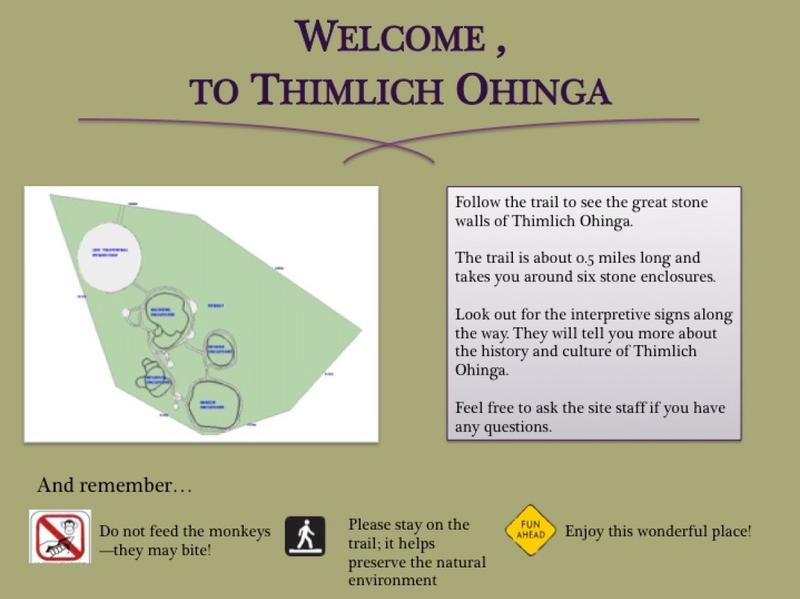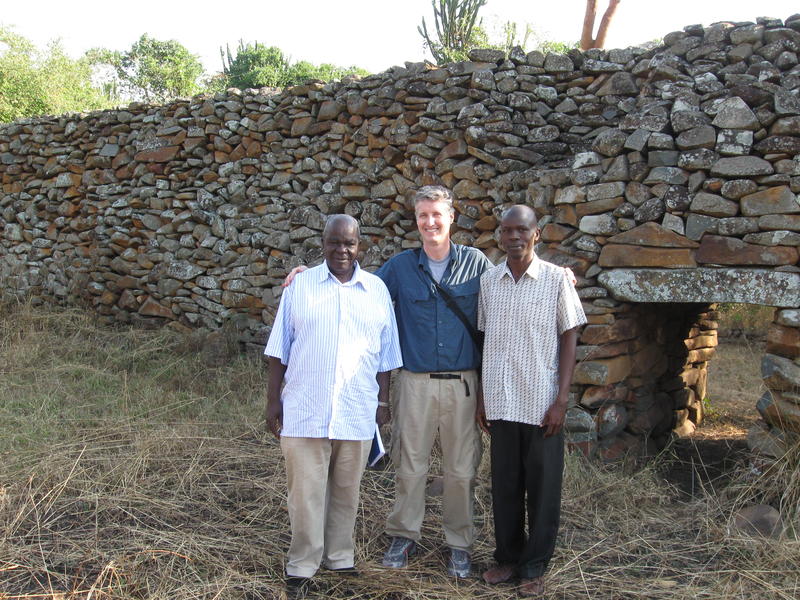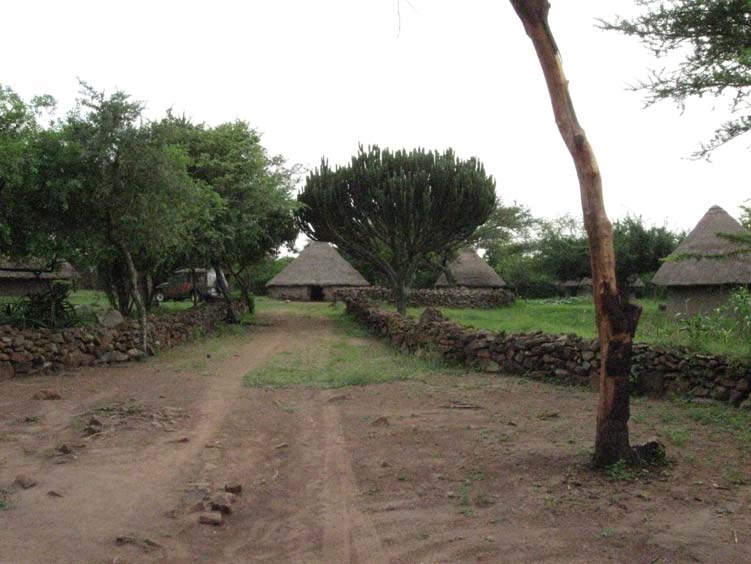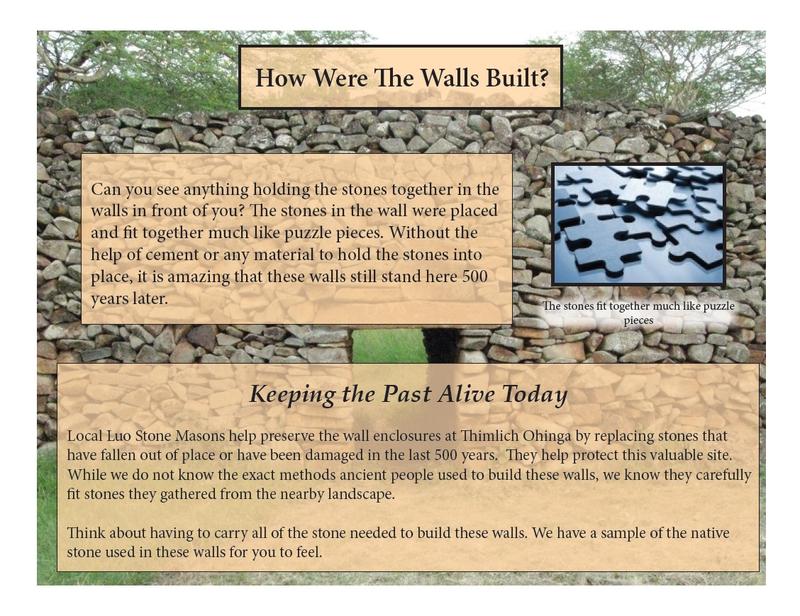May 14, 2012




During the Spring 2012 semester, twenty graduate students enrolled in “Interpretation in Museums and Heritage Organizations” in the Museum Studies Program at San Francisco State University developed interpretive signs for Thimlich Ohinga, under the supervision of AIA grantee and professor Edward Luby.
Interpretation is fascinating, lively, and a challenging area for museum and heritage workers—how do we engage the public? How do we help the public learn? How do we bring meaning about critically important heritage sites to people so that they better understand, appreciate, and take action to protect heritage places?
A whole body of research informs interpretation today and before students developed signs, panels, and brochures for Thimlich Ohinga, they studied the latest developments from the field. Good interpretation, students learned, not only includes presenting information about sites, but also involves the understanding that this information has to be used to provoke learning, inspiration, and even enjoyment. Interpretation is not just about the presentation of facts—it reveals meanings about sites in ways that enhance learning and create a connection between the visitor and the site.
With this premise, and as part of class efforts, we then asked, “but what makes good signs?” By once again examining the work of leading experts, in this case Gianna Moscardo and Douglas Knudsen, we learned the following: Good signs demonstrate an in-depth knowledge of the site or heritage place; display a clear and compelling theme; create a personal connection with the intended audience; allow visitors to obtain novel and varied experiences; are clearly written, well-organized, and structured; give visitors choices and encourage them to get involved in experiences; and finally, good signs demonstrate a respect for an understanding of audiences.
Armed with this information, the class developed signage that emphasized a variety of audiences, from international tourists to children and family groups. Excerpts from several of the student portfolios are presented here. The goal for the project was to share these portfolios with the staff of the National Museums of Kenya, create signage that created a connection between a range of visitors and Thimlich Ohinga, and encourage the use of multiple senses in the facilitation of learning.
The signage and brochures were considered by the National Museums of Kenya in developing the final interpretive material for the site, which is currently under production. As such, they are prototypes, and are meant to further the training of the next generation of museum and heritage personnel by catching visitor attention, revealing the meanings of Thimlich Ohinga, and, in concert with the local community, to convey the importance of preserving one of Africa’s greatest heritage places.
Click on the names below to look at these students’ projects:
Brochures:
Signage:
Find out more about the Thimlich Ohinga site and the Site Preservation Grant work being done there.
Learn about the Site Preservation Program.